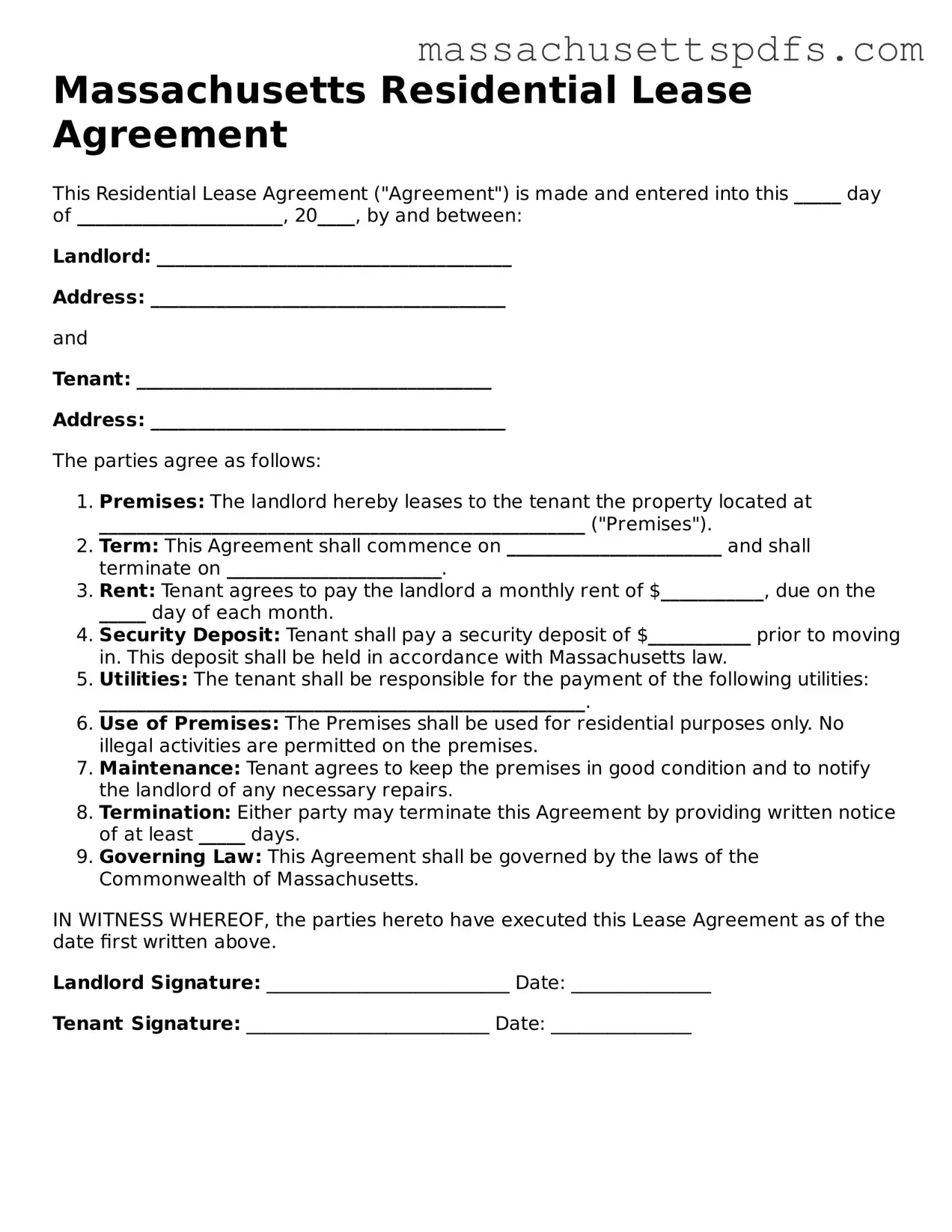Attorney-Approved Massachusetts Residential Lease Agreement Document
The Massachusetts Residential Lease Agreement is a legal document that outlines the terms and conditions of renting a residential property in Massachusetts. This form serves to protect both landlords and tenants by clearly defining their rights and responsibilities. Understanding this agreement is essential for anyone involved in a rental arrangement in the state.
To ensure a smooth rental experience, consider filling out the form by clicking the button below.
Launch Editor Here
